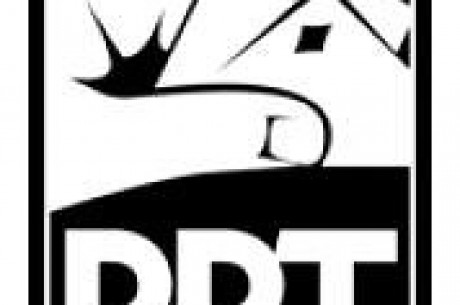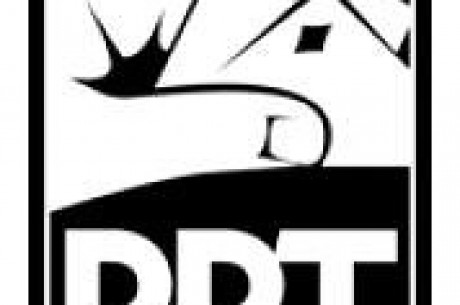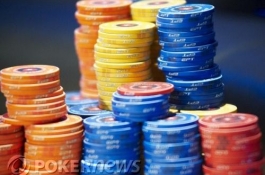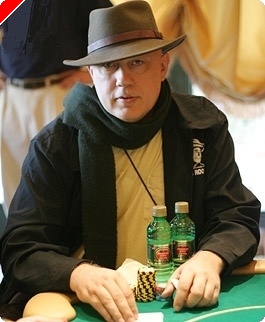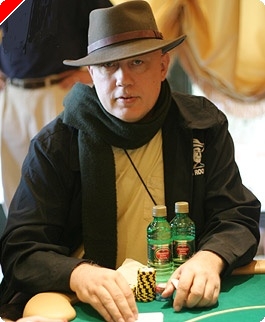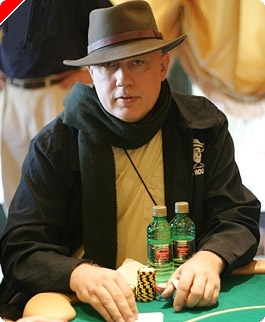Inside the Tour (2)
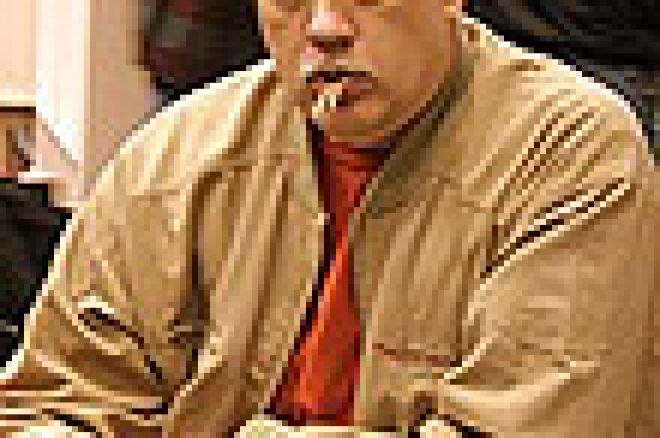
So many tournaments and so many players and so many hands to talk about!
First we need to answer the pop quiz from last column. To recap the hand, I held A4 of clubs in the big blind of 100, Erick Lindgren limped from first position, the button limped, and it came 2c3cJs, I bet 250, Erick raised to 500, and I re-raised to 1700, Erick called and on a turn of the 9 of diamonds we both checked. The river came the Q of clubs, giving me the nuts. How should I play the hand now? I have 8500, Erick has 5100, and the pot has 3550 in it. THE ANSWER: the correct play is to move all-in. If he has a club flush it is very difficult for him to muck the hand, if he holds QJ and has made top two he has a tough choice to make for his tournament life, although this is a lot like any holding where he must consider the possibility that Dennis is bluffing? Or does Dennis hold the club flush? If he has a small set he has played it poorly. If either player held AJ he should have bet the turn, so what to do now? In reality he held the K9 of clubs and would have had to call. Also in reality I wanted to optimize the chance of getting paid and only bet 1400. Against a weaker opponent this would not have mattered as he would have gone all-in anyways, but in this case Erick thought long and hard and shot me a penetrating look and finally just called. This was a brilliant call in my book and shows why Erick is a championship player. This hand led to an informal forum at the table and the usually quiet Alan Goehring weighed in with a vote for the all-in as he correctly noted that the pot was already large. Erick remarked that he should have moved all-in on the turn, and KNEW it, but could not pull the trigger. This hand shows how difficult no-limit holdem is to play perfectly if you think about it. Play it correctly when it comes up again, will you please?
I was on the other side of a similarly difficult situation against Gus Hansen in the Ultimate Bet Classic in Aruba in 2003. I made it 300 to go with AhKd from midfield against a big blind of 100 and Gus called from the little blind and it came KsJs7d. He checked and I bet the pot, which held 700, he called [at this point I had 8300 and he had 9600 in chips]. The turn came the ace of diamonds, a card we were both happy to see. Gus checked and I checked behind him! I made this check not out of fear but because I expected him [a very aggressive player] to bet at me on the river, no matter what card fell off the deck, and here came the 2 of diamonds. Gus now bet 2800 at me with the existing pot being 2100. Mucking this hand was not an option against this opponent, and now raising seemed foolish as well, as the pot was large and I would only get action when I was beat. I thought it was possible he held QdJd, but after I called he showed me the Qs10s! Wow! I could have easily gotten broke on this hand. We will return to the subject of Gus Hansen at a future time.
At this same Aruba based tournament I met a young man in a cash game that made a lasting impression on me. The following year we played more than a few hours on the very pleasant Pokerstars cruise that went from Miami around Cuba, with stops at such exotic spots as Jamaica and Cozumel. His name is Haralabos Voulgaris, and as that was too difficult for me to handle I have been calling him 'Bob' or "Montreal" ever since. In all cases, congratulations 'Bob' for the second place finish at the Commerce, and this writer will not be surprised to see him near the top of more big buy-in events. He told me that the one hand he regretted the most was when he was heads up with the 'Grinder' and he moved all-in with K2 and was called by AK, doubling up his opponent when he had him in trouble. He suggested that the right play was to raise it 50,000 instead.
Again this goes to the point of how difficult it is to play flawlessly in no-limit. Major events with multi-day formats are a lot different than the shove-it-in and pray events that most players cut their teeth on. By day four you feel like a marathon dancer and must have an iron will just to continue, to get through that day in decent shape. Day five is usually the final table and the adrenaline kicks in and carries you to the finish line. Even at the final table at the world championship, playing for millions of dollars, you will see glazed looks and total exhaustion leading to dubious decisions.
I applaud the structure we used at the Bay 101 [2005] event where over 420 starting players were chopped down to a manageable 131 by day two by playing nine levels of one hour rounds. Matt Savage understands that there is a big event almost every day and that, as players, we do not care if they double the blinds up multiple times in the first hours of play, after all you will get chips, or perish and move on to the next tournament. Multiple double ups early do everything that the hosting casino or cardroom wants done, it gets half the field out and into the live games as quickly as possible, it means that fewer dealers and floor personnel are tied up with tournament concerns and can go back to their regular jobs, makes the event much easier to control and manage in general, and where there is television coverage it makes it possible to record most of the key hands. The really important part of this observation comes now, however, and that is that we also want to have some play when we get near the money and into the money. The entrenched structures of old were based on having only a few major events each year with far fewer entrants and therefore they made sure you had a lot of play at the beginning, but when you got near the money you were forced to gamble as half your chips were taken away every hour or two as they rushed to the conclusion.
The format of having bounties is a much more interesting topic, for sure. Only the Shooting Stars tournament offers this and it affects your play, or should, for sure. At 101 this year the entry was 10,000 dollars and every table began with a player that was a designated 'bounty'. If you knocked that player out of the event you would be given 5,000 in cash and a T-shirt with the stars picture on it.
Late on my first day I was in great shape with 54,000 in chips and two vulnerable bounties at my table, a tilting TJ Cloutier on my right with 20,000 and a short stacked Toto Leonidas two to my left, when an unlucky move happened for me when we went to nine player tables. I was sent to a table with far fewer chips and much weaker opponents in theory but that means that the play is also much more unpredictable. Right away I picked up AhJh in the cutoff in an eight handed game and made it 2000 to go over a big blind of 600 with 75dollar antes. Another player called the button and Jennifer Harmon [the one bounty at this table] called 1400 more from the big blind. The flop came 976 rainbow and it was checked around. Fourth street was the J of spades, making two spades on the board, and Jennifer bet 6300 into a 6900 dollar pot, I now raised her all-in for 16,000 more hoping that she held A8 of spades, or 10-10, or J-10, or some other cards that gave her enough value to call but not to beat my hand. Well, she did call instantly and turned over 10-8 off-suit and I was drawing dead. Was I chasing a bounty or did I make the right play in all cases?

